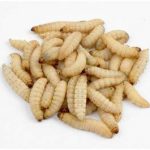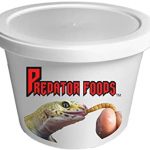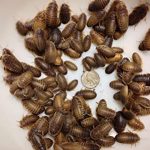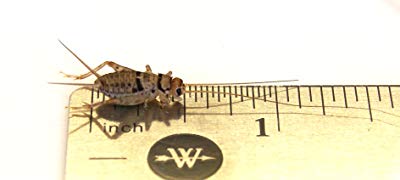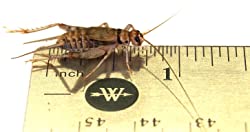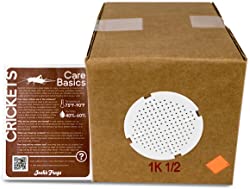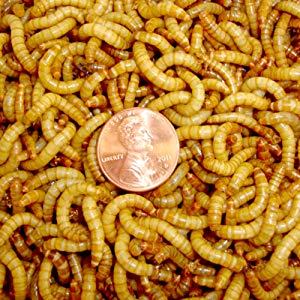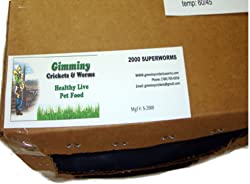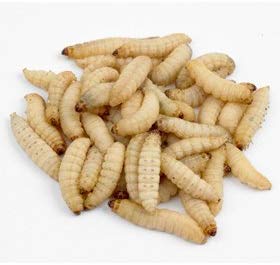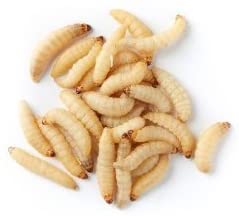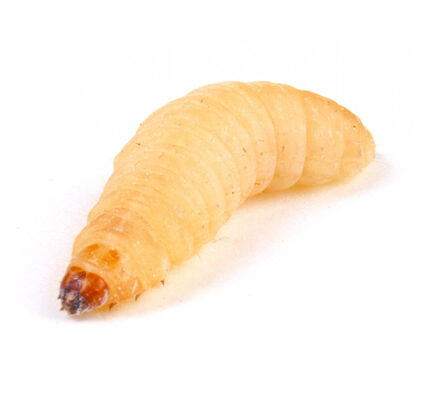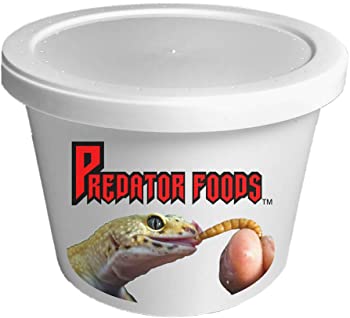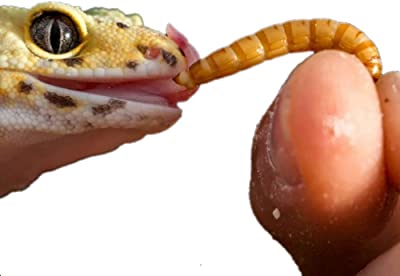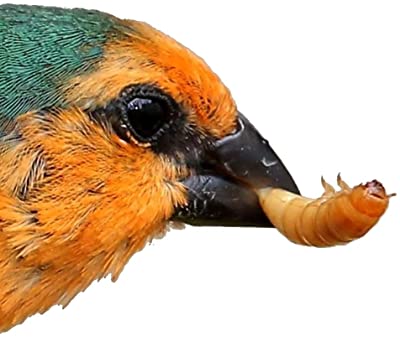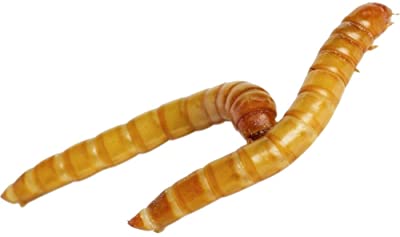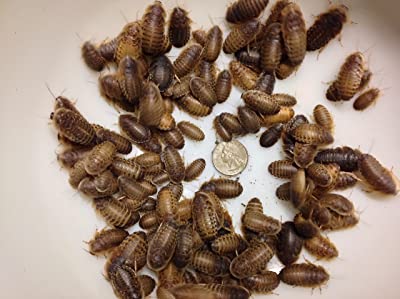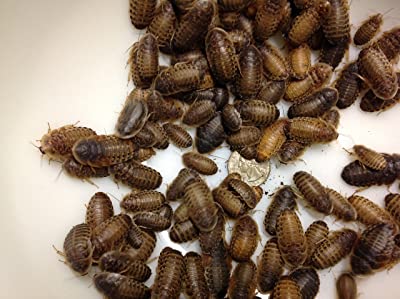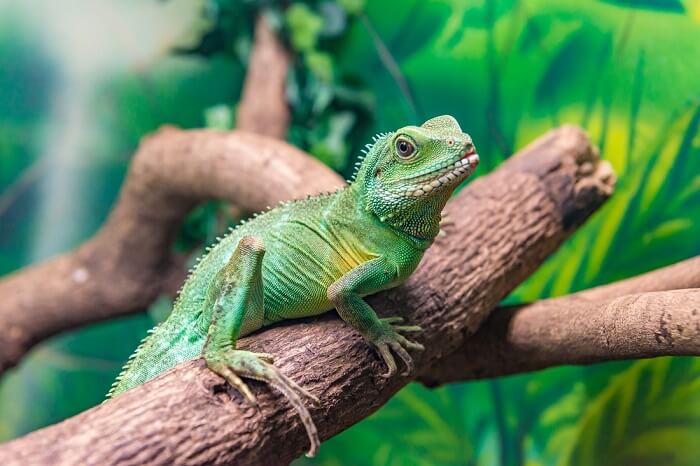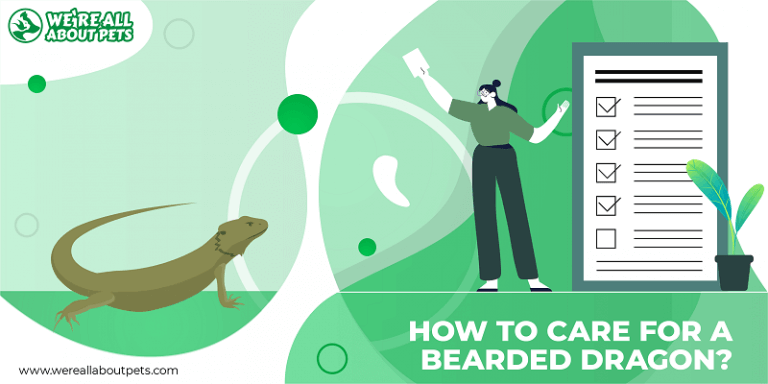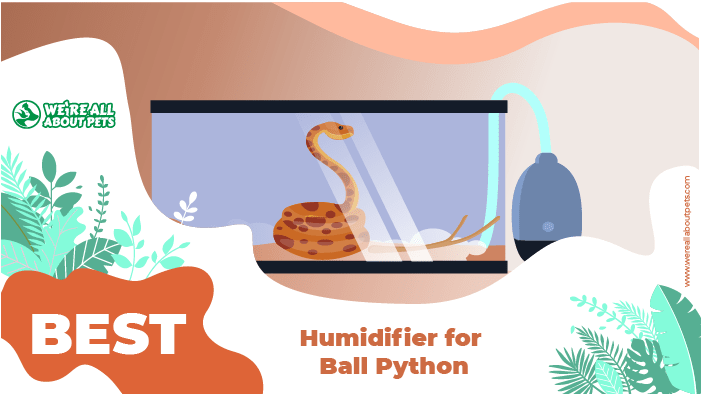The 5 Best Food For Leopard Geckos
This page contains affiliate links. We may earn money or products from the companies mentioned in this post through our independently chosen links, which earn us a commission. Learn More
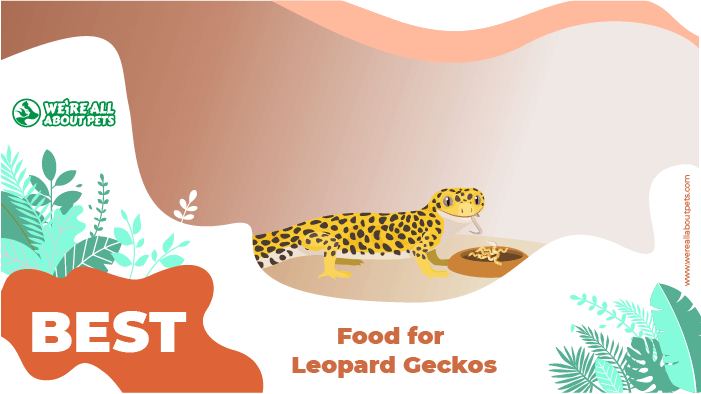
Leopard geckos make very interesting pets because of their unique colorations and friendly personalities. These little reptiles are easy to find in pet stores and reptile shows, and they do quite well in moderately sized habitats if their basic needs are met.
On top of providing your gecko with a proper habitat, you also need to think about meeting its nutritional needs with a healthy, balanced diet.
In this article, we’ll talk about the basics of feeding leopard geckos and provide some tips for choosing the best leopard gecko food. You’ll also see our top 5 picks for the best leopard gecko food.
We highly recommend looking at the comparison table we have below where we highlighted the features of each product. You’ll also find more detailed information about each product later in the article.
Quick Navigation
Compare Best Food For Leopard Geckos
|
Runner Up
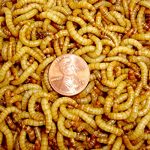
2. 2100 Live Mealworms, Organically Grown By Bassett's Cricket Ranch |
||||
|
Type
Crickets |
Type
Worm |
Type
Insect |
Type
Mealworms |
Type
Roach |
|
Amount
250, 500, 1000 |
Amount
2100 count |
Amount
250 count |
Amount
100 |
Amount
100 |
|
Key Nutrients
High protein, low fat |
Key Nutrients
High protein, high fat |
Key Nutrients
High in fat, low protein |
Key Nutrients
High protein, low fat |
Key Nutrients
High protein, low fat |
What To Look For In Food For Leopard Geckos?
Though leopard geckos are fairly small, they have big appetites and will eat just about any insect you put them in front of them. This being the case, it is your job as a responsible pet owner to make sure your gecko’s needs are met without overfeeding. You should plan to provide your leopard gecko with a varied diet of different insects to ensure nutritional balance.
Here are some important things to look for in leopard gecko food:
- All-natural. Natural, live insects should be the staple of your gecko’s diet. They should be fresh and alive, rather than freeze-dried or dehydrated.
- Properly sized. As your leopard gecko grows, you can feed it larger and larger insects. Baby geckos need insects about 3/8 inches, juvenile geckos up to ¼ inch, and adults larger insects.
- Gut-loaded. Before feeding your gecko any insects, they should be gut-loaded, either yourself or before you purchase them. This simply involves feeding the insects healthy foods so the nutrients will be transferred to your leopard gecko.
- Nutrient-enriched. In addition to feeding your gecko’s insects healthy food, you should always dust them with a calcium supplement. Once to twice a week, include a vitamin supplement in the dusting.
Our Top Picks For The Best Food For Leopard Geckos
Now that you have a better idea what to look for in a leopard gecko food, it’s time to start shopping! Keep reading to see our top 5 picks for the best leopard gecko foods.
Josh's Frogs 1/2" Banded Crickets
Product Info
- Type: Crickets
- Amount: 250, 500, 1000
- Key Nutrients: High protein, low fat
Guaranteed Analysis

Dry Matter Basis

- High in protein and low in fat
- Very easy to find, affordably priced
- Easy to gut-load and dust with calcium and vitamin powder
- May escape the cage or find crevices to hide in
- Have an unpleasant smell, can make a lot of noise
2100 Live Mealworms, Organically Grown By Bassett's Cricket Ranch
Product Info
- Type: Worm
- Amount: 2100 count
- Key Nutrients: High protein, high fat
Guaranteed Analysis

Dry Matter Basis

- Very affordable and easy to find them
- High protein content (also high fat)
- Not as messy or smelly as other insects
- High in fat, shouldn’t be fed everyday
- Slow movement may not entice some geckos
Meal worms are very affordable and easy to find as well, though they need to be dusted with calcium powder because they are trick to gut-load and they have a poor calcium to phosphorus ratio.
Galleria Mellonella Live Waxworms
Product Info
- Type: Insect
- Amount: 250 count
- Key Nutrients: High in fat, low protein
Guaranteed Analysis

Dry Matter Basis

- Very inexpensive and easy to find
- Can be used to jump-start captive feeding
- Most geckos find them irresistible
- Too high in fat for everyday feeding
- Difficult to gut-load like other insects
Predator Foods Bulk Live Mealworms
Product Info
- Type: Mealworms
- Amount: 100
- Key Nutrients: High protein, low fat
Guaranteed Analysis

Dry Matter Basis

- High protein, low in fat
- Stores very well in the refrigerator
- Can be purchased in bulk to save money
- Can be tricky to find, somewhat expensive
- Difficult to gut-load properly
Butter worms are very easy to store, as well, so you can purchase them in bulk to save money without worrying about the worms dying. They are a little challenging to gut-load, however, so be mindful of that and find other ways to balance your gecko’s daily diet.
Dubia Roaches 100 Large
Product Info
- Type: Roach
- Amount: 100
- Key Nutrients: High protein, low fat
Guaranteed Analysis

Dry Matter Basis

- High in protein and low in fat
- Quick movement stimulates feeding
- Very easy to breed and to gut-load
- Somewhat tricky to find compared to other insects
- Can be a little more expensive than other options
You’ll also be glad to know that these beetles are very easy to gut-load, so they can be very nutritious for your gecko. They are also easy to breed at home, which is good news considering that they can be more expensive to purchase.
Tips For Feeding A Leopard Gecko
You may be surprised to learn that leopard geckos are insectivores, not omnivores like other reptiles. This means that they have a biological need for insects as the foundation of their diet. Leopard geckos don’t possess a functioning cecum, the part of the digestive tract that digests cellulose (plant fiber). This being the case, you should feed your gecko a variety of different insects.
Here are some simple tips for feeding a leopard gecko properly:
- Provide your leopard gecko with a variety of insects – crickets, mealworms, waxworms, butterworms, and Dubia roaches are great options.
- Choose your insects according to your leopard gecko’s size – baby geckos need much smaller insects than adult geckos.
- Reserve high-fat insects like butterworms and waxworms for occasional treats – too many of these high-fat insects can cause your gecko to gain an unhealthy amount of weight.
- Young geckos should be fed once a day while adults should be fed every other day – it is best to feed in the late afternoon or early evening when geckos tend to hunt in the wild.
- Feed your leopard gecko about two insects for every inch of length – remember to choose the right size insects and don’t overfeed your gecko.
- Never feed your leopard gecko fruit or vegetables – these reptiles are insectivores which means they can only digest insects.
Now that you have a better understanding of the nutritional needs for leopard geckos, you’re ready to start shopping for leopard gecko food. Take what you’ve learned here and put it to work in choosing the best food for your pet leopard gecko.
Final Remarks
Leopard geckos may not be the biggest reptiles out there, but they have voracious appetites. These little lizards will eat just about any insect they can get, so it is your job to make sure your pet gets a balanced diet. Take what you’ve learned here about the nutritional needs of your leopard gecko and choose the right live foods to formulate its staple diet.
If you’re still not sure where to start in looking for a leopard gecko food, try out one of the top 5 best leopard gecko foods we’ve reviewed above. Good luck!







